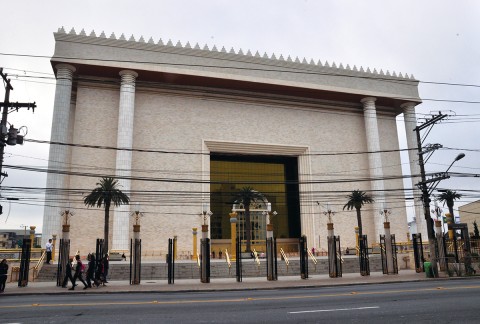Brazil’s massive replica of the Temple of Solomon
The Pentecostals of the Igreja Universal do Reino de Deus have a mighty vision.

The modern growth of Christianity outside the West has not thus far left many great architectural showcases of the kind we find in other boom periods of the faith’s history. A few megachurch facilities defy superlatives—witness Nigeria’s Faith Tabernacle, designed to accommodate 50,000 worshipers. (The same church is now constructing a facility intended for twice that number.) But for sheer ambition, it would be hard to beat the Temple of Solomon in São Paulo, Brazil.
The Temple of Solomon was opened in 2014, to huge fanfare and with the nation’s then president in attendance. While plenty of churches around the world take their titles from biblical sites, this one goes far beyond simply borrowing a name. It is a literal reconstruction of the ancient temple, as described so precisely in the Bible.
The main difference is that it is substantially scaled up from that holy original, which stood a mere 40 feet high. The new Brazilian exemplar is 180 feet, about the height of an 18-story building. That figure is no accident: the Temple of Solomon was specifically designed to be twice the size of the country’s famous Catholic symbol, the statue Christ the Redeemer overlooking Rio de Janeiro.




